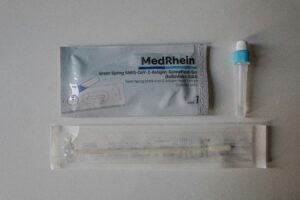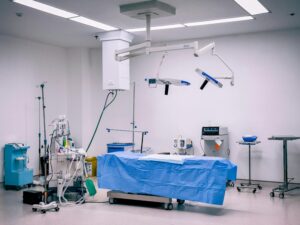Choosing the right production strategy represents one of the most critical decisions for medical device companies. The comparison between OEM vs CMO models shapes cost, compliance, and market success.
Executives must evaluate scalability, quality control, and long-term competitiveness before selecting a path. The optimal production approach influences time-to-market, operational efficiency, and return on investment. Understanding the differences between OEMs and CMOs is crucial for effective strategic planning.
The decision between in-house manufacturing and outsourcing affects multiple aspects of a company’s operations. From intellectual property management to production lead times, every choice carries implications for risk, cost, and scalability.
Ultimately, the right model enables companies to respond quickly to market demands. While OEMs retain control over innovation, CMOs offer flexibility and expertise in compliance. Both options offer advantages depending on the company’s priorities and resources.
Understanding the difference between OEMs and CMOs
Between OEM vs CMO, an OEM production model places design, development, and branding directly under the manufacturer’s control. Original Equipment Manufacturers invest heavily in research, intellectual property, and facilities.
They manage technical specifications, regulatory submissions, and long-term product strategies. This independence strengthens brand identity while demanding significant resources for infrastructure, workforce, and compliance management.
In contrast, a contract manufacturer provides execution support without owning intellectual property. CMOs specialize in producing devices on behalf of OEMs, following strict quality systems and industry regulations.
Their strength lies in operational efficiency, cost control, and regulatory alignment across complex markets. This model allows OEMs to focus on innovation and market expansion while outsourcing execution.
How OEMs and CMOs work together effectively
Understanding the difference between OEM and CMO reveals their complementary nature. OEMs emphasize innovation, branding, and customer engagement. CMOs deliver production expertise, supply chain efficiency, and rapid response to shifting market demands.
Many successful healthcare companies combine both, retaining strategic control while leveraging external support for scalability and growth. This distinction shapes the MedTech ecosystem.
While OEMs drive technological advances, CMOs ensure those innovations reach patients efficiently and compliantly. Knowing when to prioritize each model helps leaders align production strategy with growth objectives.
When to consider a contract manufacturing partner
Healthcare markets are highly volatile, creating challenges for firms that rely exclusively on internal infrastructure. Partnering with a contract manufacturer in the medical field allows companies to adjust capacity without incurring significant upfront investments.
This flexibility proves essential when demand spikes unexpectedly or new opportunities arise in international markets. One of the main advantages is healthcare scalability. CMOs support pilot production for small clinical runs, then expand to full-scale manufacturing once approvals and demand are confirmed.
This staged approach minimizes risks, conserves capital, and accelerates decision-making when bringing new products to market. Time-to-market represents another decisive factor. CMOs offer speed by maintaining pre-validated facilities, specialized staff, and established compliance systems.
These elements reduce delays caused by internal bottlenecks and support faster market access without compromising safety. For many firms, speed becomes a competitive advantage that directly impacts profitability. The OEM vs CMO decision depends on whether innovation control outweighs the need for external execution.
Scaling production and accelerating market entry
Contract manufacturers provide flexibility that OEMs cannot achieve internally. They allow companies to scale production incrementally, starting with small clinical or pilot runs. This approach reduces financial risk while validating demand and ensuring regulatory compliance.
By leveraging CMO infrastructure, firms can respond quickly to market changes. Rapid adjustments in production volume enable the efficient meeting of unexpected demand spikes or entry into new international markets. This capability enhances competitiveness and shortens time-to-market for innovative devices.
CMOs also support parallel processes such as packaging, labeling, and distribution. Coordinated workflows accelerate regulatory submissions and product launch timelines. For many healthcare companies, this staged production strategy becomes a decisive factor in achieving operational and financial goals.
Compliance and risk in both manufacturing models
Regulation defines credibility in the medical device sector. Under the OEM production model, companies carry full responsibility for audits, certifications, and documentation. This control ensures transparency but requires heavy investments in regulatory departments, training programs, and continuous monitoring.
CMOs, however, embed regulatory alignment into their operations. They maintain validated quality management systems, apply traceability protocols, and support client compliance with global frameworks, including those of the FDA.
By outsourcing compliance execution, OEMs reduce operational stress and allocate resources to innovation and business development. Risk management remains central in OEM vs CMO relationships. Outsourcing production requires clear contracts that define accountability for quality failures, recalls, or audit findings.
Without transparency, companies risk exposure to regulatory penalties and reputational harm. Effective governance frameworks ensure compliance responsibilities remain visible and enforceable.
Cost, lead time, and technical support considerations
Financial strategy plays a critical role in production planning. OEMs face high fixed costs from facilities, staff, and equipment. These costs secure independence but limit flexibility during periods of fluctuating demand.
Even minor production delays can result in significant financial pressure for firms with high overheads. CMOs transform those costs into variable expenses. Clients pay only for the production volume they require, improving predictability and reducing long-term capital exposure.
This model supports companies with uncertain demand cycles or those entering new markets with limited data. It reduces risks while maintaining consistent product quality.
Lead Time and Technical Support in OEM vs CMO
Lead times differ significantly between models. OEMs often struggle with limited resources, causing bottlenecks during development or scale-up phases. CMOs shorten timelines through dedicated infrastructure, specialized processes, and experience handling complex product lifecycles.
Technical support further differentiates the models. CMOs offer engineering expertise, regulatory guidance, and process optimization for manufacturing. By complementing OEM innovation, they create a hybrid advantage: strong product design supported by reliable production execution.
This partnership model enhances resilience in a rapidly evolving healthcare environment.
Why RexMed is positioned to support OEMs as a trusted CMO
Since 1990, RexMed Health has operated as a proven contract manufacturer of medical products, helping OEMs strike a balance between innovation and operational efficiency. The company specializes in agile production solutions that adapt to changing market requirements while ensuring compliance with regulatory frameworks.
RexMed’s small-batch agility supports prototype testing and clinical trials. This staged approach lowers risks, conserves resources, and prepares firms for large-scale production. For companies navigating uncertainty, this flexibility becomes a potent competitive tool.
The company also delivers strong regulatory alignment. With established quality systems, traceability frameworks, and binational delivery capabilities, RexMed provides confidence for firms entering highly regulated markets.
This expertise allows OEMs to maintain compliance without building extensive internal regulatory departments. By combining OEM vs CMO insights with decades of experience, RexMed ensures clients gain scalability, speed, and compliance support.






